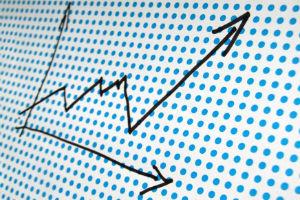 Although the worst of the crisis is over, there is still some fear in the markets that makes growth projections do not exceed 4% for Latin America. The private sector must come together to prevent the crisis from reaching the region again.
Although the worst of the crisis is over, there is still some fear in the markets that makes growth projections do not exceed 4% for Latin America. The private sector must come together to prevent the crisis from reaching the region again. By Vanesa Restrepo
The storm has passed. The air conditioning and ventilation industry faced between 2008 and 2009 the most difficult years in recent history and today, before the end of 2010, the outlook seems much more encouraging. Well they say that after the storm always comes calm.
The last few years were difficult: In 2008 few had managed to predict the economic bubble that would burst in the United States, gestated in the real estate sector and that dragged the banks with it. As a result, there was a shortage of credits that affected the normal development of activities and investments in all productive segments. It was then that panic led to the bankruptcy of different companies and, particularly in the air conditioning and refrigeration sector, there was a suspension of new purchases, an increase in maintenance and a decrease in the rate of replacement of equipment and refrigerants by less polluting ones.
By 2009 the situation improved. With the experience and warnings to review every step that was taken, companies adjusted their budgets, those who provided technical services for maintenance and repair took care of those businesses, while some sectors relied on the resources approved by governments to finish replacing the ozone-depleting substances used as refrigerants.
In Latin America, in particular, the crisis was felt less strongly, as the governments of Colombia, Brazil, Argentina, Peru and Chile took steps to protect domestic markets. In total, the region's GDP fell to 1.8% according to ECLAC calculations, after having shown steady growth since 2004. In 2009 latin American GDP grew by approximately 4%, and it is expected that this 2010 will close with an increase of 5.2%, which would mean a recovery of the lost ground and a stabilization in the pace that was had.
Slow recovery
But the odds of growing come now. Firstly, because we are in the final stretch of the first phase of the Kyoto protocol, and the replacement has not yet been completed. That could lead to an increase in the market for equipment and new refrigerants.
However, it should be noted that the Economic Commission for Latin America and the Caribbean, ECLAC, published its first estimates for 2011, according to which the world economy will have a slight slowdown, particularly in the United States and Europe. Although this does not imply that there is a W effect on the economy (double decline and slow recovery), many of our economies will depend on the results obtained in the first world. Such is the case of Mexico, which imports and exports most of its products to and from the United States.
To that is added an abundance of dollars that generated a depreciation against local currencies, directly affecting exporters.
ECLAC estimates indicate that growth in Latin America will be around 3.9% in 2011. The International Institute of Finance (IIF) agrees with this assessment and provides an equal figure as a calculation of possible regional growth. The Andean Development Community, CAF, for its part, estimates that the economies of the area could be strengthened by 4% compared to the results they deliver for 2010.
Trading Options
A recent World Bank report explains that the U.S. share of Latin American exports fell from 44 percent in 1990 to 37 percent in 2008, while China's grew more than tenfold in the same period. However, the country remains a leading provider of technology and science.
That is why several of our countries are awaiting the approval of a new free trade agreement. The one that has sounded the most so far is that of Panama and Colombia, which has not yet been approved.
As a natural way to shield against a possible fall of some market is precisely to diversify. For this reason, the advisors of the organization, as well as some experts consulted by ACR LATINOAMERICA, suggest taking advantage of the benefits brought by regional agreements, such as Alba, Unasur, CAN, among others. Through them you can access new market niches and generate competitiveness at the local level.
Local projections
The ECLAC report assures that in 2011 Panama will grow by 5%, similar to what it is estimated to have for the rest of 2010. Meanwhile, Bolivia will be at 4.5% this year and will have a slight slowdown to 4% in 2011.
Mexico, which was the most affected by the crisis, could reach up to 4.1% in 2010, a figure quite important if one considers that in 2009 it had a 6% drop in its economy. By next year it is predicted that it could be growing at a rate of 3% per year.
Colombia will grow 3.7% and next year will slow growth to 3%. Meanwhile, Costa Rica will grow at 4%, but will be surpassed by Chile which could reach 6% growth in 2011.
Ecuador will have a regular performance, with growth of 2.5%; being surpassed only by Venezuela, where growth is not calculated, but a stabilization after the 3% drop in the economic pace presented this year.
And in the rest of Central America, the regional body calculates increases of 2.5% per year for Honduras and 2% for Guatemala and Nicaragua.













